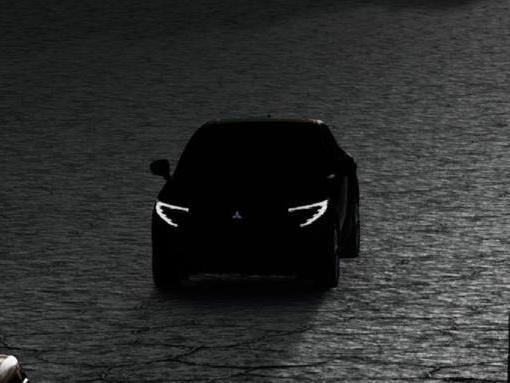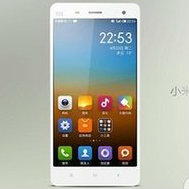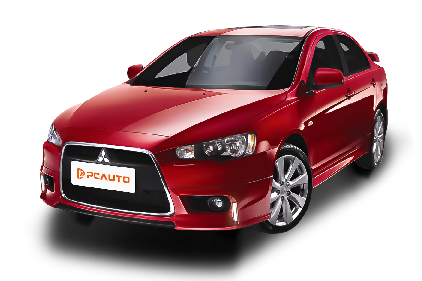Q
What kind of oil does a 2016 Lancer take?
For the 2016 Mitsubishi Lancer, we recommend using API SN or higher grade 5W-30 full synthetic engine oil. This viscosity is well-suited for Malaysia's tropical climate, offering good high-temperature protection and fuel efficiency. If your vehicle has high mileage or you frequently drive aggressively, you might want to consider 5W-40 for enhanced high-temperature stability – but always check the owner's manual to confirm the manufacturer's specific requirements first.
For turbocharged models or if you mainly do short-distance driving, it's advisable to shorten the oil change interval to every 5,000 kilometers to ensure optimal engine protection. Additionally, choosing oils with ACEA A3/B4 or ILSAC GF-5 certifications will better meet the demands of modern engines.
It's worth noting that Mitsubishi Motors Genuine Oil, the factory-recommended option, is a reliable choice that undergoes rigorous testing. However, other reputable brands like Shell Helix, Castrol EDGE, or Petronas Syntium with equivalent specifications work just as well. The key here is to avoid using oil from unknown sources, as it could potentially damage your engine.
Regularly changing both the engine oil and oil filter is crucial for maintaining your engine's lifespan. We also recommend checking the oil level periodically to ensure it stays within the normal range.
Special Disclaimer: This content is published by users and does not represent the views or position of PCauto.
Related Q&A
Q
Does the 2016 Mitsubishi Lancer have a rearview camera?
The 2016 Mitsubishi Lancer did come with a rearview camera on some of its higher-spec trims in the Malaysian market, especially the GT and GT Premium variants. Back then, this was a really practical safety feature that gave drivers a clearer view of what was behind them when reversing, which was super helpful. It's worth keeping in mind that specs can vary by region, though. If you're a owner, your best bet is to check the vehicle settings menu, flip through the owner's manual, or just give a Mitsubishi authorized dealer in Malaysia a call to get the exact lowdown on your car's features. These days, rearview cameras are pretty much standard on most new cars, and they often work hand-in-hand with parking sensors to cut down on blind spots—something that's especially useful for those tight parking spots you often find in Malaysia. If your Lancer didn't come with one from the factory, you might be thinking about adding an aftermarket one. Just make sure you go through a reputable auto parts shop, though. It's crucial that any modifications meet JPJ regulations, and you'll want a good-quality unit that's compatible with your car's system to avoid voiding any warranties.
Q
What is the difference between the 2016 Lancer ES and GT trim?
The key differences between the 2016 Mitsubishi Lancer ES and GT variants lie in their equipment and performance. As the entry-level trim, the ES comes with a 1.6L MIVEC engine (117 hp), paired with either a 5-speed manual or CVT gearbox. It rolls on standard 16-inch steel wheels and features manual air conditioning plus a basic audio system, focusing squarely on affordability and practicality. Step up to the GT, and you're looking at a more potent 2.0L MIVEC powerplant (148 hp), mated to a CVT with paddle shifters. Externally, it gets sportier styling with 18-inch alloy wheels and body kits, while the cabin ups the ante with a leather-wrapped steering wheel, keyless entry, automatic climate control, and a premium Rockford Fosgate sound system. Safety-wise, the GT also adds side airbags and vehicle dynamic control.
For Malaysian buyers, the GT trim is better suited for those seeking driving enjoyment and enhanced features – its retuned suspension, in particular, handles our diverse local road conditions more capably. It's worth noting that the Lancer holds strong resale value in the used car market here, with the GT variant being especially popular thanks to its higher spec. If you're eyeing a pre-owned model, make sure to check the CVT transmission's service history thoroughly – that's a critical maintenance point for this model in our tropical climate.
Q
Is the 2016 Mitsubishi Lancer good in the snow?
How the 2016 Mitsubishi Lancer handles in snow really comes down to how it's kitted out. If you've got the all-wheel drive (AWD) version paired with winter tires, you'll definitely notice a big step up in stability when things get snowy. The AWD system does a solid job of shuffling power between all four wheels, and winter tires—with their deeper treads and that special rubber compound—really dig in for better grip. But if you're rolling on a front-wheel drive model with all-season tires? You'll want to take it easy. Slow down, and avoid slamming on the brakes.
Now, for our readers in Malaysia, I get it—snow isn't exactly a regular thing here. But understanding how a car behaves in different conditions is still useful. Think about those rainy season downpours when roads get slick; the same logic applies. Swapping in the right tires and keeping good driving habits go a long way. Oh, and don't sleep on regular brake checks and keeping your tire pressure dialed in—those small things make a big difference for safety.
As an affordable daily driver, the Lancer's mechanical reliability holds up pretty well across different climates. But let's be real—extreme conditions still call for the right setup and some smart driving moves.
Q
What is the safety rating of the 2016 Mitsubishi Lancer?
The 2016 Mitsubishi Lancer scored a 4-star safety rating from ASEAN NCAP, based largely on its stable body structure, dual front airbags, and standard ABS brakes. While that covers the basics, it falls a bit short compared to some contemporary rivals that bagged 5-star ratings with features like six airbags or active safety tech such as automatic emergency braking.
In the Malaysian market, the Lancer's passive safety still holds up for daily driving. Its RISE anti-collision body design does a decent job of dispersing impact forces, which is good. But here's the thing: side airbags and Electronic Stability Control (ESC) aren't standard. If you're after extra protection, looking into third-party safety accessories might be a smart move.
It's worth noting that ASEAN NCAP's testing focuses more on Southeast Asian road conditions, with tests like the 40% offset crash and pedestrian protection. It's not quite as comprehensive as Euro NCAP, so I'd definitely recommend checking out the detailed report on their official website before buying and weighing it against your own driving habits.
If your budget stretches further, the Toyota Corolla or Honda Civic from the same era probably offer more in terms of active safety kit. But the Lancer still has its appeal, especially with its lower used car prices – it's a solid value pick for Malaysian buyers who prioritize practicality.
Q
How to connect bluetooth to 2016 Mitsubishi Lancer?
So, you want to pair your phone with the Bluetooth in a 2016 Mitsubishi Lancer? No sweat. First, fire up the car and make sure that center display is on. Once you're on the main menu, look for either "Settings" or just straight-up "Bluetooth" – it's usually pretty easy to spot. Dive into that, then flip on the Bluetooth function and make sure the car is set to be discoverable by other devices.
Now grab your phone, head into its Bluetooth settings, and scan for nearby devices. The Lancer's system should pop up, probably labeled something like "Mitsubishi" or "Lancer" – pretty straightforward. Tap to connect, and it'll ask for a passcode. The default's usually something simple like "0000" or "1234" – check your owner's manual if those don't work, but they're the usual suspects. Once it pairs up, you're golden – stream your tunes, take calls hands-free, all that good stuff.
If you hit a snag – like it won't connect or keeps dropping – try giving both the car's system and your phone's Bluetooth a quick restart. And hey, do all this while the car's parked, yeah? Safety first when messing with settings.
Bluetooth is pretty much standard in cars these days, right? Beyond just music, a lot of rides (including some Lancers, depending on trim) let you make calls directly through the system or even use voice commands. Pro tip: keep your phone's OS and the car's infotainment software updated. It helps with compatibility and keeps everything running smooth. And most importantly, once you're rolling, keep your eyes on the road – don't fiddle with the Bluetooth controls too much. Distracted driving's no joke.
Q
What size engine is in the 2016 Lancer?
The 2016 Mitsubishi Lancer hit the Malaysian market with two engine choices: 1.6L and 1.8L naturally aspirated four-cylinders. The 1.6L (code-named 4A92) cranks out 113 hp and 149 Nm of torque, while the 1.8L (4B10) steps things up to 139 hp and 172 Nm. Both mills pair with either a CVT automatic or 5-speed manual, depending on trim, focusing on fuel efficiency and smooth driving dynamics. For Malaysian buyers, these engine options make the Lancer a solid pick for daily commutes and family use. The 1.6L shines in city traffic with its better fuel sipping, while the 1.8L delivers more punch for highway jaunts. It’s worth noting that while naturally aspirated engines don’t pack the same punch as turbos, they’re cheaper to maintain and time-tested reliable—perfect for folks who value long-term dependability. On top of that, the Lancer’s suspension is tuned for comfort, handling Malaysia’s varied road conditions like a champ, whether you’re navigating city streets or logging highway miles.
Q
Do Mitsubishi Lancers 2016 have CVT transmission?
The 2016 Mitsubishi Lancer was equipped with a CVT automatic transmission in the Malaysian market. That was Mitsubishi's main transmission technology back then, aimed at improving fuel economy and enhancing driving smoothness – perfect for all the frequent stop - and - go situations you get in city traffic.
How does a CVT work? It uses a steel belt and pulleys to give you that seamless, "stepless" acceleration, which lets the engine work more efficiently compared to a traditional automatic transmission with a fixed number of gears.
Now, it's worth mentioning that Lancer specs could vary a bit from one market to another, but in Malaysia, the 2016 model was mainly offered with the CVT. I think some trim levels might have still had a manual gearbox as an option, for drivers who prefer manual gear shifting.
For Malaysian drivers, the CVT in the Lancer performs reliably in the hot weather and those heavy traffic jams. Plus, maintenance costs are relatively low. But here's the thing, you must remember to change the CVT fluid regularly with the right stuff. That's key to keeping it running strong for the long haul.
If you're looking at a used Lancer, it is advisable to get a professional to check the transmission properly. And definitely ask to see the service records from the original owner. It'll give you peace of mind knowing the gearbox has been looked after.
Q
How to connect phone to Mitsubishi 2016?
Connecting your phone to a 2016 Mitsubishi is straightforward, but first, make sure your specific model supports either Bluetooth or USB connectivity. Most 2016 Mitsubishi models like the ASX, Triton, and Outlander come equipped with both options. For Bluetooth pairing, start by turning on your phone's Bluetooth, then head into your car's settings menu and select "Bluetooth Devices." Search for available devices, pick your phone, and follow the prompts to complete pairing—some models might ask for a PIN, usually "0000" or "1234."
If you prefer USB, just plug your phone into the car's USB port using the original charging cable. The system should automatically detect it, letting you use features like screen mirroring or charging. A few models even support Apple CarPlay or Android Auto, but you'll need to enable those settings on your phone first.
Pro tip: Keep your car's infotainment system updated to avoid compatibility headaches. If you run into connection issues, try restarting your phone or the car's system—it usually fixes minor glitches. For our friends in Malaysia, remember that the hot weather can cause phones to overheat, which might mess with connectivity. Keep your phone in a well-ventilated spot to prevent that.
Mitsubishi's infotainment systems are designed with everyday usability in mind—simple interfaces that don't overcomplicate things. If you need model-specific details, check your owner's manual or reach out to an authorized Mitsubishi service center in Malaysia for help.
Q
Is 2016 Lancer AWD?
The 2016 Mitsubishi Lancer didn't come with an all-wheel drive (AWD) option in the Malaysian market. It was strictly front-wheel drive (FWD), which is pretty standard for most compact sedans in its class. As a practical, budget-friendly family car, the Lancer's FWD setup struck a decent balance between fuel efficiency and everyday drivability – perfect for city commutes and those longer highway trips.
If AWD is a must-have for you, Mitsubishi's got other options in their lineup, like the Outlander or ASX. Those SUVs do offer AWD here in Malaysia, which comes in handy for slippery roads or light off-road adventures. Just keep in mind, while AWD does boost stability in tricky conditions, it typically adds a bit to your fuel bill and maintenance costs too. So, it really boils down to weighing up what you'll actually use the car for.
Malaysia's tropical climate and rainy weather might pique some drivers' interest in AWD, but honestly, a regular FWD Lancer with good tires and electronic stability control should handle most daily driving scenarios just fine.
Q
What kind of battery does a 2016 Lancer take?
The 2016 Mitsubishi Lancer in the Malaysian market typically comes fitted with a 12-volt lead-acid battery. Specifically, you're looking at either the 46B24L (for the 1.6L and 1.8L variants) or the 55D23L (for the 2.0L model). Both are maintenance-free (MF) batteries, boasting decent longevity and reliable performance – perfect for Malaysia's hot and rainy weather. When it's time for a replacement, stick with reputable brands like Yuasa, Bosch, or Panasonic. These names have solid reputations locally and usually offer good after-sales support. Also, make it a habit to check your battery's condition regularly – things like voltage and electrolyte levels – and ensure your charging system is working properly. That'll go a long way in extending its life. If your Lancer has a start-stop system, you'll need a dedicated AGM or EFB battery to keep everything compatible. A quick heads-up though: battery specs can sometimes vary slightly between different years or trim levels of the Lancer, so it's always smart to double-check your owner's manual or chat with a professional mechanic to confirm the exact battery you need before making a purchase.
Popular Cars
Model Year
Car Compare
Car Photo
Latest Q&A
Q
Is the 1.5 L 4 cylinder?
Yes, a 1.5L engine is typically a 4-cylinder setup—the most common configuration for small to mid-sized displacements. This layout strikes a solid balance between fuel efficiency and power output, making it ideal for daily commuting and family use. Four-cylinder engines are relatively simple in design, cheaper to maintain, and benefit from proven technology that delivers smooth operation. You'll find this configuration widely used by mainstream brands like Honda, Toyota, and Mazda. While there are some 1.5L 3-cylinder options out there, the 4-cylinder remains the go-to choice, especially in models prioritizing durability and refinement. If you're shopping for a 1.5L-powered car, pay attention to specific tech features—turbocharging, direct injection, etc.—as these can significantly impact real-world driving dynamics and fuel economy.
Q
What is the displacement of a V8 engine?
The displacement of a V8 engine typically ranges from 4.0 to 6.2 liters, depending on the vehicle and its purpose. For example, high-performance sports cars often pack a 5.0-liter or larger V8, while trucks and SUVs usually stick with something between 4.3 and 5.7 liters. Known for its brute power and smooth operation, the V8 is a go-to for acceleration and towing—though its thirst for fuel is something buyers always weigh up.
These days, turbocharging has changed the game. Smaller-displacement V8s (like a twin-turbo 4.0L) can now deliver big-block performance with slightly better efficiency. And let’s not forget the sound—few things beat the roar of a tuned V8 exhaust, a big reason why enthusiasts love ‘em.
If you’re into V8s, keep an eye on local used car listings or auto shows—you’ll often spot some gems there.
Q
What is the difference between 1l and 1.2 L engine?
The key difference between 1-liter (1L) and 1.2-liter (1.2L) engines comes down to displacement—the total volume of all cylinders in an engine, measured in liters. Generally, a larger displacement means more power and torque, so a 1.2L engine will likely feel stronger during acceleration, highway driving, or when tackling hills with a load. That said, it’ll also drink a bit more fuel compared to the 1L.
The 1L, being smaller, prioritizes fuel efficiency, making it a smart pick for city commuting or everyday runs. On the flip side, the 1.2L’s extra performance often means higher manufacturing costs, which might bump up the car’s price tag. Plus, the 1L’s compact size fits better in smaller or budget-friendly models.
Your choice really hinges on driving needs: go for the 1.2L if you regularly hit the highway or want more grunt, but stick with the 1L if you’re mostly urban-bound and watching fuel bills. Oh, and don’t forget—tech like turbocharging or variable valve timing can squeeze near-equal performance from smaller engines these days, so specs alone don’t tell the full story. Always check how the engine’s tuned.
Q
What does 5.7 liter engine mean?
A 5.7-liter engine refers to a total displacement of 5.7 liters, meaning all cylinders combine for a total working volume of 5,700 cubic centimeters. Generally, a larger displacement allows the engine to take in more air and fuel, delivering stronger power and torque—making it ideal for performance-oriented vehicles or those built for heavy-duty work, like pickup trucks, full-size SUVs, or muscle cars.
In the local market, you’ll often find big-displacement engines in American-branded vehicles. These engines excel at high-speed cruising or towing heavy loads, though they do come with higher fuel consumption and increased running costs.
Thanks to advancing technology, many automakers now use turbocharging or hybrid systems to help smaller engines deliver power comparable to older, larger naturally aspirated units—like how some modern 2.0L turbocharged engines can match the performance of older V6 engines while being far more fuel-efficient.
If fuel economy is a priority, a smaller turbocharged or hybrid model might be the better choice. But if you value the smooth, raw power of a classic big-block, a 5.7-liter engine remains a timeless option.
Q
What liter engine is a V6?
The displacement of a V6 engine isn't set in stone—it typically ranges between 2.5 and 4.0 liters, depending on the vehicle's design and purpose. For example, a family sedan might pack a 2.5L or 3.0L V6, while performance cars or pickups could go for 3.5L or larger. Displacement directly impacts power output and fuel economy: bigger usually means stronger, but thirstier too.
Named for its six cylinders arranged in a V-shape, the V6 strikes a sweet spot—delivering smoother operation and better balance in a compact package compared to four-cylinder engines, while being more fuel-efficient than V8s. That's why it's a popular choice for midsize sedans and SUVs.
These days, with turbocharging becoming commonplace, smaller-displacement V6 turbos can match the punch of older, bigger engines while sipping less fuel. Choosing one? Think about your daily needs. A 2.5L works fine for city commutes, but if you're frequently hitting the highway or towing, step up to 3.0L or above.
View MoreRelated News

Mitsubishi Lancer Evolution might be resurrected, so what will the new Evo look like?
WilliamNov 14, 2025

Choose Honda HR-V or Mitsubishi XPANDER for a family car?
WilliamNov 12, 2025

Toyota HiAce and Mitsubishi Outlander upgraded to receive five-star safety rating
WilliamSep 24, 2025

Mitsubishi Cuts Full-Year Profit Forecast by 30%, Challenged by US Tariffs and Intensified Global Competition
Kevin WongAug 28, 2025

Mitsubishi to Launch Electric Vehicle Based on Nissan Leaf in Second Half of 2026
LienMay 8, 2025
View More


















Pros
Cons